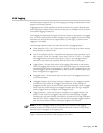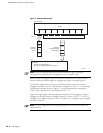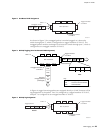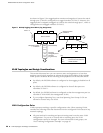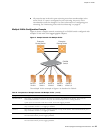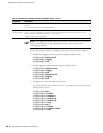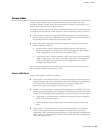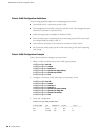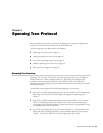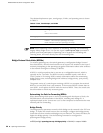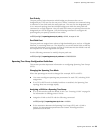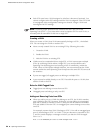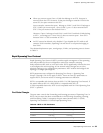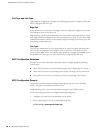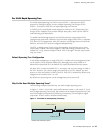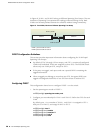
Spanning Tree Overview 31
Chapter 3
Spanning Tree Protocol
When multiple paths exist on a network, Spanning Tree Protocol configures the
network so that a switch uses only the most efficient path.
The following topics are discussed in this chapter:
Spanning Tree Overview on page 31
Rapid Spanning Tree Protocol on page 35
Per VLAN Rapid Spanning Tree on page 37
Multiple Spanning Tree Protocol on page 39
Fast Uplink Convergence on page 41
Spanning Tree Overview
Spanning Tree Protocol (STP) detects and eliminates logical loops in a bridged or
switched network. When multiple paths exist, Spanning Tree configures the
network so that a switch uses only the most efficient path. If that path fails,
Spanning Tree automatically sets up another active path on the network to sustain
network operations.
The EX2500 switch supports the following Spanning Tree Protocols:
IEEE 802.1D (2004) Rapid Spanning Tree Protocol (RSTP). RSTP enhances the
Spanning Tree Protocol to provide rapid convergence on Spanning Tree
Group 1.
IEEE 802.1Q (2003) Multiple Spanning Tree Protocol (MSTP), which extends
RSTP to multiple Spanning Tree Groups (STGs). MSTP provides both rapid
convergence and load balancing in a VLAN environment, using multiple VLANs
in each Spanning Tree Group (STG).
Per VLAN Rapid Spanning Tree Plus Protocol (PVRST+), which enhances the
RSTP protocol by adding the ability to have multiple Spanning Tree Groups.
PVRST+ is based on IEEE 802.1w Rapid Spanning Tree Protocol.



